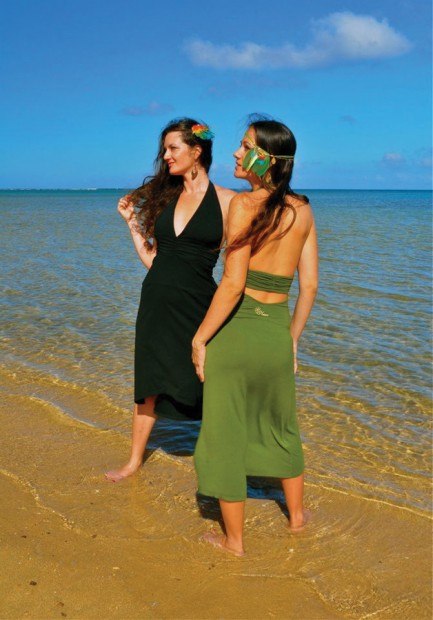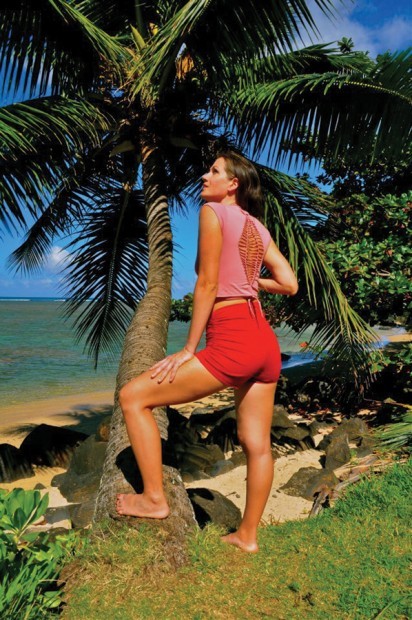LIHU‘E — Monica Habig is a 30-year-old eco-friendly entrepreneur and designer. After establishing residence in Kaua‘i in 2000, she started looking into ways of promoting sustainable clothing geared towards environmental and human safety. Using organic ingredients and materials that
LIHU‘E — Monica Habig is a 30-year-old eco-friendly entrepreneur and designer. After establishing residence in Kaua‘i in 2000, she started looking into ways of promoting sustainable clothing geared towards environmental and human safety.
Using organic ingredients and materials that are grown free of pesticides and herbicides, Habig started selling eco clothing in 2008.
“Over the last four years, I have expanded my business from one small clothing rack to working with multiple designers from around the globe,” she said.
Sustainable fashion is about clothes and accessories that are created while examining the environmental and social impact the products will have throughout their life spans.
Sustainability reflects a growing collective consciousness set out to improve the environment around us, and by the same token, our lifestyles.
More than a fad that took roots during the ‘90s, sustainability has become highly fashionable — and what better medium than fashion to express one’s desire for a system that can be supported indefinitely in terms of environmentalism and social responsibility?
Habig currently is in the process of creating her own line, Manalicious. “The clothing I sell is all created by eco-conscious individuals. All items are made in small batches, are fair-trade and use organic cotton, hemp and soy materials.”
The highly fashionable designs are comfortable and functional.
“I have mostly women’s clothing in all sizes, many colors and over 150 designs to choose from,” she said.
Habig also carries men’s and children’s clothing, and hopes to expand her selection as she receives wider interest.
Habig became a healer, a musician and an advocate of holistic lifestyle at an early age.
“Today I feel blessed to be able to dress the world with clothing made from natural fibers,” she said.
Natural fibers are by definition nonpetroleum-based. By comparison, nonorganic cotton is one of the most widely grown and chemical-intensive crops in the world.
According to World Health Organization, conventionally grown cotton uses approximately 25 percent of the world’s insecticides and more than 10 percent of the world’s pesticides.
According to Earth Pledge, a nonprofit organization committed to promoting and supporting sustainable development, it takes more than 8,000 chemicals, several of them petroleum-based, to turn raw materials into textiles.
The renewability and source of a fiber, the process of how a raw fiber is turned into a textile, the working conditions of the people producing the materials, and the material’s total carbon footprint are some of the main factors when considering the sustainability of a clothing piece.
Although all cotton has a large carbon footprint based on its extreme water needs for its cultivation and production, organic cotton is a far more sustainable choice for fabric as it is completely free of destructive toxic pesticides and chemical fertilizers.
“I usually hold eco-clothing events every two to four weeks at different locations around the island,” she said. “The events are really fun and I always collaborate with local artists. I transform the space into a boutique. It’s always a good place not only to shop but to meet new people and make new friends. I serve organic pupus and wine and sometimes there is live music.”
The next event will be held in Old Kapa‘a Town during the art night on Aug. 4 from 5 to 9 p.m. at the Joy of Movement studio, located upstairs in the Dragon Building.
Habig’s eco-friendly clothing lines are also available at her home in Wailua. To schedule an appointment to see her collection, call 212-7506, or email her at Manaka.azhar@yahoo.com.



